Updated July 3, 2021
With a population of almost 17 million people owning close to 20 million bicycles, cycling is a way of life for people of all ages in the Netherlands. It’s the perfect country to enjoy a cycling vacation with Cycletours Netherlands by bike and barge travelling on and beside canals, especially when tulips are in bloom. Read on for a detailed review, comprehensive guide, and day-to-day itinerary.
Table of Contents
Cycle and cyclist friendly
The Dutch have been building dedicated bike paths (35,000 kilometres of them in fact) since the late 1800s. As a result, a bike-friendly infrastructure has been developed. There’s a continuous network of clearly signposted, well maintained and well lit cycle paths, cycle lanes, cycle bridges, cycle tunnels, cycle ferries, cycle parking stations, and cycle traffic lights. There are even specially designed containers for cyclists to deposit garbage on the fly.
Drivers treat cyclists with courtesy and respect. There’s a strong likelihood that drivers are cyclists themselves when they’re not behind the wheel of a car. Where cycle paths and roads meet, cyclists have priority. If a collision occurs between a car and a cyclist, in many cases the driver and his/her insurance is deemed to be liable to pay damages. All this contributes to making cycling safe, convenient, and affordable. The country is a cyclist’s dream.
The Netherlands is laced with canals, making a bike-and-barge vacation an enjoyable and economical option.
When is the best time?
In April and May, Holland explodes with displays of blooming tulips, hyacinths, irises, scillas, crocuses, and muscari. In residential and public gardens, lilacs, magnolias, wisterias, laburnums, and hawthorns herald the arrival of spring. These are the kind of visual fireworks everyone should experience at least once in a lifetime.
Spring creates a perfect backdrop for special cycling tours through the legendary tulip fields. Many include a visit to the world-famous Keukenhof Park with its 32 hectares of brilliantly coloured flowering bulbs.
Advantages of a bike-and-barge tour
Combining cycling and travel means being out in the fresh air to not only enjoy the scenery, but benefit from several hours of low impact exercise. All that calorie-burning pedal power builds an appetite for the delectable array of European foods. Relish the guilt-free enjoyment of the wide selection of inexpensive beer and wine. Add a barge to the mix and a perfect holiday starts to take shape.
There’s something attractive about the familiarity of returning to the same floating hotel at the end of a cycling day. It’s convenient to unpack once at the beginning of the tour, and giving wash-and-wear clothing the extra time it needs to dry before each new cycling day.
Another appealing aspect is the option to forego one or more days of cycling and remain on board the boat. A barge usually features common areas such as a lounge and sundeck, providing comfortable areas for non-cycling family members or friends to relax during the day. Remaining on board is particularly useful in the event of illness or injury. When you’re not well, a 50-kilometre ride in inclement weather isn’t a healthy choice.
Cycletours Netherlands by bike and barge
Schiff Liza Marleen
A four-country bike-and-boat tour of the Danube introduced us to bike-and-boat travel. It was on the MV My Story in 2013, and organized by Rad and Reisen/Eurocycle. As a result, we signed up with the same company for the Southern Relax Tulip Tour operated by Rad and Reisen’s local partner, Cycletours Holidays. This was during the first week of May in 2014.
Our barge for the tour was the Schiff Liza Marleen, built in 1918 as a fishing boat to harvest herring from the waters of the North Sea. Converted to a passenger craft in 1992, she can carry up to 34 passengers housed in 14 two- and three-person cabins. For our tour, we were 24. A crew of four — all Dutch — Skipper Nico, Chef Manfred, Host Titcia, and Guide Annie rounded out the Liza Marleen’s entourage for the week.
The cabins provided all the amenities needed for a comfortable week on the water. They included bunk beds with reading lights, and private bathrooms with plenty of glorious hot water. In the two cabins assigned to our group of four friends, the bottom beds were singles and the top ones doubles. Each top bunk enjoyed a window, and was accessed by a sloping ladder. Other cabins contained single bunk beds in a different configuration. All cabins contained shelves and several hooks and hangers. Luxury accommodation it wasn’t; for us, it was perfect.
Food
Meals were excellent, food was plentiful, and every effort was made to accommodate dietary needs. Coffee and tea were available throughout the day. Beer, wine, and soft drinks were available on a self-serve honour system. Purchases were marked throughout the week and bills settled at the end of the trip.
The 08:00 buffet-style breakfast consisted of cereal, yogurt, fruit, eggs, bacon, pancakes, cold cuts, and cheese. Each person prepared a sandwich for a packed lunch, complemented by fruit, juice packs, and candy and protein bars.
Three-course suppers at 18:30 were varied. By the second day, they assumed the atmosphere of boisterous family affairs. It was with eager anticipation we awaited the announcement of the menu with appreciative “oohs and aahs” as Titcia described each dish. When Manfred emerged from the kitchen after the meal, he was greeted with rousing applause. Everyone helped clear away dishes by passing plates and cutlery down to the end of the table to be stacked ready for pick up. Willing helpers cleared the tables of cups, glasses, placemats, and napkins.
The Group
The 24 mostly retired and pre-retired participants came from Austria, Canada, United Kingdom, and the United States. English was the language of announcements and itinerary descriptions, and conversations were in Dutch, English, French, and German.
Guide-led cycling
We travelled as one large group. This was different from our Danube bike-and-boat tour. For that trip, we moved at our own pace in small groups by following detailed maps and instructions, tour signposts, and our written notes from briefing sessions.
The option existed to go it alone but after having experienced so many twists and turns on the first day, it was not an alternative anyone took up. A key advantage was the security that came with travelling as part of a group. It meant remaining on the right paths, reaching the boat on time, getting help if needed, and not having to expend all that mental and emotional energy on staying oriented and not getting lost.
Our guide Annie led the way, cycling back and forth to shepherd the group across busy intersections without traffic lights. On a couple of occasions, she retrieved lost cyclists. What an amazing accomplishment.
At the back of the line were two ‘sweeps.’ They ‘swept up’ stragglers and stayed in touch with Annie by phone as required. For the most part, the system worked well, especially with the appointment of a couple of riders in the middle of the pack. Their job was to keep an eye on any widening gaps, and the location of the sweeps. At times, one of them would remain at a turn to direct cyclists. By the end of the week, we were working like a well-oiled machine, with everyone watching out for the safety and well-being of others in the group.
The Bikes
The height of each person was collected as part of the booking process. Therefore, the selection of bikes contained the appropriate mix of small, medium, and large men’s and women’s bikes. There was also the option to rent an electric bike. The bikes were all assembled by the Dutch manufacturer Batavus, with Galibier and Comanche 24 models available. They were lightweight and performed very well. Each bike was outfitted with a built-in lock, water bottle cradle, and double waterproof panniers. While the bikes had 24 speeds, about 18 of these were redundant given the topography of our route.
Day 1 (20 km)
The Liza Marleen was berthed at Oosterdock in the centre of Amsterdam near Nemo, the Science and Technology Museum nearby central station. We were greeted by the crew, shown to our cabins, and provided with a short briefing before sailing out of the city in the direction of Vianen. It was a pleasant Saturday afternoon on the water, shared with a variety of boats overflowing with people enjoying the canals of Amsterdam. After an hour or so, we disembarked for a short 20-km cycle.
The countryside was sprinkled with grazing cattle and sheep, canal-side houseboats, and charming villages. After a relatively mild winter, spring had come early to the Netherlands. The landscape flaunted every imaginable shade of green, interspersed with the splashes of colour of flowering trees, shrubs, and plants.
Day 2: Vianen to Gouda (39 km)
The Netherlands means ‘the low lands,’ with approximately one third of the country below sea level. As a result, the Dutch have drained many lakes and parts of the sea, creating ‘polders’ (reclaimed land). This prompts the oft-quoted saying “God created the earth, but the Dutch created the Netherlands.”
The centuries-long struggle with water has resulted in a labyrinth of canals and drainage channels crisscrossing the landscape. Many of our cycle paths were formed of fill dredged from the adjacent channels. This invariably placed us on slightly higher ground from which to enjoy views of the countryside. With waterways everywhere, waterfowl were our constant companions — geese and ducks, herons and hawks, storks, swans, and nesting coots.
The route from Vianen took us to our lunch stop of Schoonhoven, a town with a rich history in the traditional craft of silversmithing. Later, we arrived in Gouda (pronounced ‘Howda’) to narrow streets, a picturesque town hall in a large central market square, and a canal-side shop dedicated to Gouda’s world-famous cheese. It was May 4, when the Dutch hold “Dodenherdenking” or “Remembrance of the Dead.” It commemorates those who have died in wars or peacekeeping missions since the outbreak of World War II. Throughout the country, two minutes of silence are observed at 20:00 when we attended a remembrance gathering in the Gouda town hall square.
Day 3: Gouda to Rotterdam to Delft (37 km)
It’s like stepping back into medieval times visiting the 123-metre long St. Janskerk (St. John’s Church) dedicated to John the Baptist, patron saint of Gouda. The church is especially famous for its 400-year-old ‘Gouda Windows’ removed prior to the outbreak of World War II. They were packed in crates and hidden for safe keeping in earthen bunkers. Fortunately, the church survived both the occupation and the liberation, and the stained-glass windows were restored to their original place in 1947.
No visit to Gouda would be complete without sampling the traditional stroopwafel (treacle waffles) first made in Gouda in the early nineteenth century.
From Gouda, we set off in the direction of Kinderdijk. It’s the only place in the world with so many windmills so close together in an authentic polder landscape. The 19 mills, pumping stations, low and high storage basins, ditches, and sluices form such an ingenious water management system that the complex was added to UNESCO’s World Heritage List in 1997. Today, a large pumping station is responsible for controlling the water level in the polder.
A fast ferry took us from Alblasserdam to Rotterdam where we boarded the Liza Marleen. Most of us headed to the sundeck for the sailing to Delft. Skipper Nico explained that a condition of our remaining on the sundeck was that when the wheelhouse lowered, we were to ‘hit the deck.’ This involved sitting on the floor as the barge passed under bridges with limited clearance. It was a beautiful evening and the sundeck was an ideal vantage point from which to enjoy the changing scenery.
Day 4: Delft to Leiden (48 km)
Delft is famous for its pottery, the ‘Delft blue.’ Our visit to De Delftse Pauw (Delft Pottery) was extremely well organized, with two guides seamlessly conducting a tour of the facility in English, French, and German.
From Delft, our cycle route took us to The Hague. Sharing the busy streets with cars, motorcyclists, trams, pedestrians, and other cyclists proved very challenging. It was also exhilarating to experience a brief cultural immersion in the life of locals who cycle in busy cities on a daily basis. A short stop at the Peace Palace housing the International Court of Justice introduced us to the origins and functions of this magnificent institution.
From The Hague, we cycled to the North Sea coast at Scheveningen with its sprawling sandy beach, restaurants, amusements, and quirky beachfront sculptures.
Cycling through the dunes was a peaceful contrast to the hectic streets of The Hague. A few gentle inclines and declines followed the contours of the dunes, and the trees provided ample protection from wind and blowing sand. The serenity of the dunes was conducive to reflecting on the gift of seeing Holland by bike and barge.
After a brief stop and stroll around the seaside town of Katweya, we headed towards Leiden, the birthplace of Rembrandt (van Rijn). We found the Liza Marleen moored near the Zijlpoort, a gate that once formed part of the city walls.
Day 5 – Keukenhof
The Southern Relax Tulip Tour includes a visit to Keukenhof. The public bus system provided transportation from Leiden to the world-famous spring gardens in the town of Lisse, the centre of Holland’s bulb district. In the 32-hectare park, bulb growers display their best and newest wonders in blazing colours along pathways lined with acres of manicured gardens. With more than seven million tulip, daffodil, hyacinth, and muscari bulbs planted and tended by Keukenhof gardeners each year, the park has to be one of the most photographed places on earth. While the thousands upon thousands of tulips in rich kaleidoscopic arrangements are without a doubt the stars of the show, there is so much more to enjoy at Keukenhof.
Indoor areas showcase numerous floral arrangements and displays, changing regularly throughout the brief eight-week Keukenhof season. The Beatrix Pavillion with its Orchid, Bromeliad and Anthurium Shows was a stunning favourite.
Day 6: Leiden to Haarlem (59 km)
From Leiden, we cycled through Rijnsburg, and soon after took the Veerpont ferry to Warmond. With a maximum capacity of 34 passengers and bicycles, the ferry needed to be perfectly balanced. People were asked by the ferry operator to move to one side or the other to achieve the desired distribution of weight. Our cooperation was rewarded with a tray of candies passed around the boat.
Much of our cycling route was through the heart of Bloembollenstreek. Holland’s bulb-growing region stretches from Haarlem to Leiden where bulbs have been grown since the end of the sixteenth century. Unfortunately, we could only dream and drool over what the gardens would have looked like just a few short weeks earlier. Spring had come early to this part of Europe, and we had missed the patchwork of tulip blooms in the fields by about two weeks.
At the seaside town of Noordwijk, we paused by the system of underground military bunkers and tunnels built under the Noordwijk sand dunes by German troops occupying the town from 1940 to 1945. The Atlantikwall, stretching from the French-Spanish border up to Norway, was built as a barrier against an anticipated Allied invasion. After lunch on the beach, our cycling route took us in a northerly direction towards Haarlem.
We passed more fields where we could only imagine what a spectacular sight it must have been a few weeks earlier. We took solace in the fact that the billions of spent blooms were part of the natural cycle of building bulbs worthy of export to countries around the globe. The barely distinguishable brown and green hyacinths, tulips, and daffodils were still enjoying their only spring beneath Dutch skies. Needless to say, our disappointment was harnessed into shaping plans to return to the region in a subsequent year around the third week of April.
At Haarlem, which rendered its name to Harlem, New York, the Haarlemmermeer (Haarlemmer Lake) is today a polder. Originally using windmills, and later (between 1849 and 1852) employing three steam-powered pumping stations, the water was pumped into a circular canal around the polder before being transported to the sea.
Eventually, the Haarlemmer was pumped dry of 831 cubic kilometres of water creating 18,300 hectares of fertile land. In fact, Schiphol Airport is situated here, approximately three metres below sea level. A visit to the Cruquiusgemaal (Cruquius Pumping Station), site of the largest steam engine in the world, confirmed what had already been observed while cycling — that the Netherlands is an extraordinary country. It’s an incredible example of what ingenuity, perseverance, and ambitious engineering can accomplish.
Day 7: Haarlem to Amsterdam (51 km)
Our cycling day started with a leisurely ride through Spaarnwoude, a recreational area just outside Haarlem.
At Spaarndam (named after the dam built on the Spaarne River to limit the danger of flooding from the sea), we paused by the statue of Hansje Brinker on the IJdijk. He was a fictitious character who saved the country from flooding by putting his thumb in a leaking dyke. Today, the character symbolizes Holland’s perpetual struggle against floodwaters.
The Buitenhuizen ferry from Spaarndam to Assendelft across the Noordzeekanaal (North Sea Canal) put us within cycling distance of Zaanse Schans. This open-air cultural museum on the bank of the Zaan River consists of warehouses, workshops, traditional weatherboard houses, and several working windmills. In the seventeenth and eighteenth centuries, there were thousands of windmills along the dykes. They performed various functions as sawmills, dye mills, and oil mills powering the Dutch economy.
The Zaanse Schans village provides a picture of what it must have been like. One of the highlights was a visit to a klompermakerij (wooden shoe maker) and museum where regular demonstrations were conducted on the carving of wooden shoes.
A fierce headwind on the journey from Zaanse Schans to Amsterdam made the final two hours of our 250-km cycling week the most demanding. A short break at the Landsmeerderveld memorial provided a welcome respite from the blustery conditions. The memorial, constructed of parts of the plane found in the fields in Landsmeer, marks the crash on September 29, 1941 of a Vickers Wellington bomber on its way back to Britain after a successful bombing mission over Italy.
We arrived ‘home’ to a special table setting prepared by Titcia, hinting at a more festive atmosphere for our last supper together. Manfred rose to the occasion by preparing a wonderful buffet of delicious Indonesian dishes and a fiery dessert.
The Verdict
- With its multitude of bike paths and a cycling-positive culture, the Netherlands is a perfect destination for a cycling vacation. We were constantly amazed at the patience and thoughtfulness of Dutch drivers, and felt a level of safety not experienced in Canada.
- The tour is perfect for leisure cyclists, including those who haven’t ridden a bicycle in decades. Cycle paths are on mostly flat terrain and daily distances are manageable. Electric bikes are available for easier cycling.
- The tour was sprinkled with such a rich variety of scenery and experiences that it was interesting at all times. Organization was superb.
- On the Liza Marleen, we were treated as honoured guests. The crew bent over backwards to make our cycling tour all it could be… and more. They were amazing.
- We often found ourselves comparing the Southern Relax Tulip Tour with the Danube boat-and-bike tour on the 174-passenger My Story of the previous spring. We definitely preferred the more intimate interaction with passengers and crew that came with a smaller group. By the end of the second day, we knew everyone’s name and where each person was from. A tangible group spirit developed over the course of the seven days. At the end of the week, a list of email addresses was compiled so we could exchange photographs and stay in touch.
Logistics
- If considering a spring bike-and-barge tour, make allowances for the unpredictability of nature. If feasting on the vibrant colours of the flowering field bulbs is part of the appeal, pitch to the middle of the season (e.g., the third week of April).
- Expect rain, and temperatures of anywhere between 10 and 30 degrees. Dress in layers and don’t skimp on good quality rain gear.
- Helmets aren’t mandatory in the Netherlands for this type of cycling, so bringing a helmet or renting one is optional.
- Assemble a small first-aid kit to take out cycling, and include a variety of band-aids, as well as antiseptic wipes and antiseptic cream.
- Bring a pocket shopping bag to carry gear to and from the panniers. The process of loading and unloading of the bikes needs to move quickly, especially if it’s raining.
- Wi-Fi on the barge was very slow, and limited to one hour per day just before supper. Staying connected to the cellular network can be very useful. I used it to check the weather, stay in touch with home, and research stops along the way. It was handy to call a taxi and our accommodation hosts before and after the tour. It’s critical if volunteering as a ‘sweep,’ or travelling independently from the group. If arriving at Schiphol, there are several options. I chose Lebara and my 20-euro investment bought a SIM card, 1GB of data and 7,50 euro calling credit. I wasn’t disappointed and was very pleased with the service.
There are several companies offering cycling tours in the Netherlands. If they’re as good as Cycletours, or as great as the crew on the Liza Marleen, expect a memorable experience.
For more photographs, check out the album below. If you’re considering a bike-and-boat tour of the Danube, you might be interested in Cycling the Danube: a four-country tour by bike and boat.
If you found this post helpful, please share it by selecting one or more of the social media buttons below. Have you taken a bike-and-barge tour? Please comment on your experience or share a link to your blog or photos in the comments. Thank you.
Care to pin it?
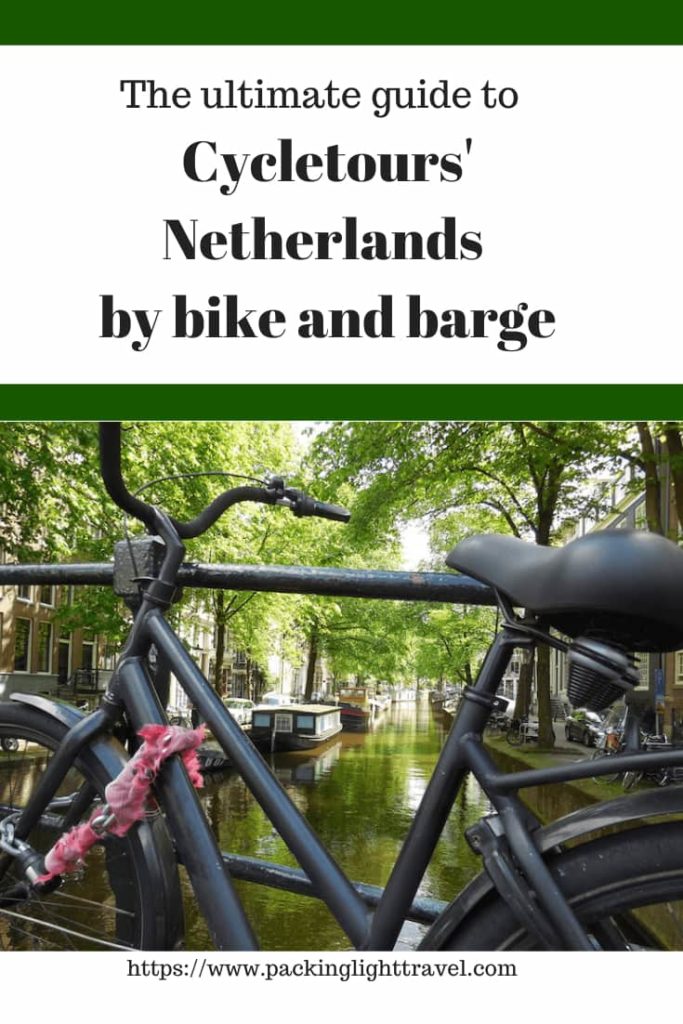 This post is neither sponsored nor solicited. I paid the full price of the tour, and I’ve not received any requests, instructions, or rewards from Cycletours.
This post is neither sponsored nor solicited. I paid the full price of the tour, and I’ve not received any requests, instructions, or rewards from Cycletours.


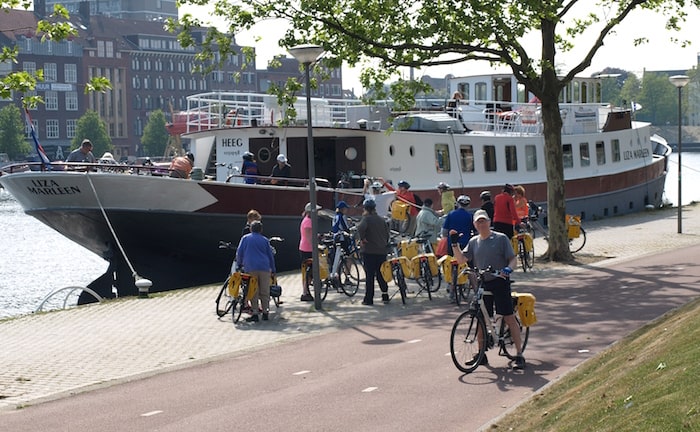
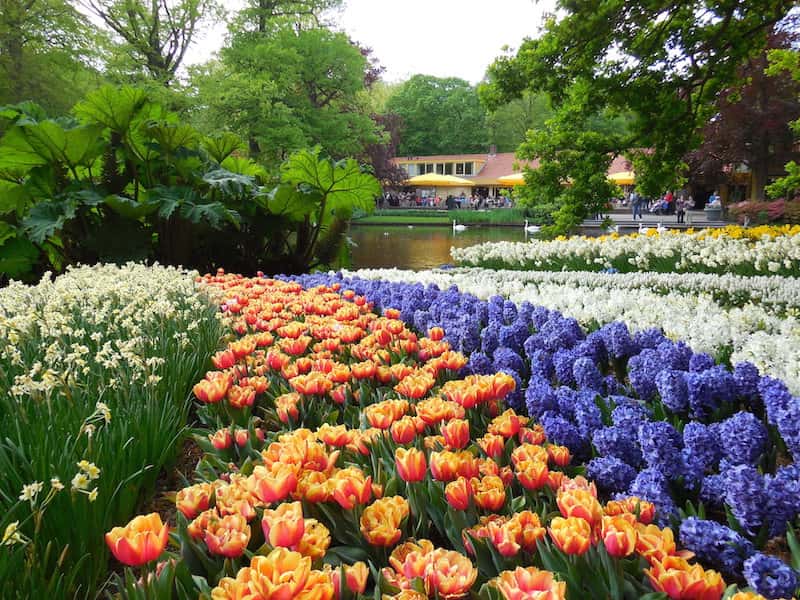
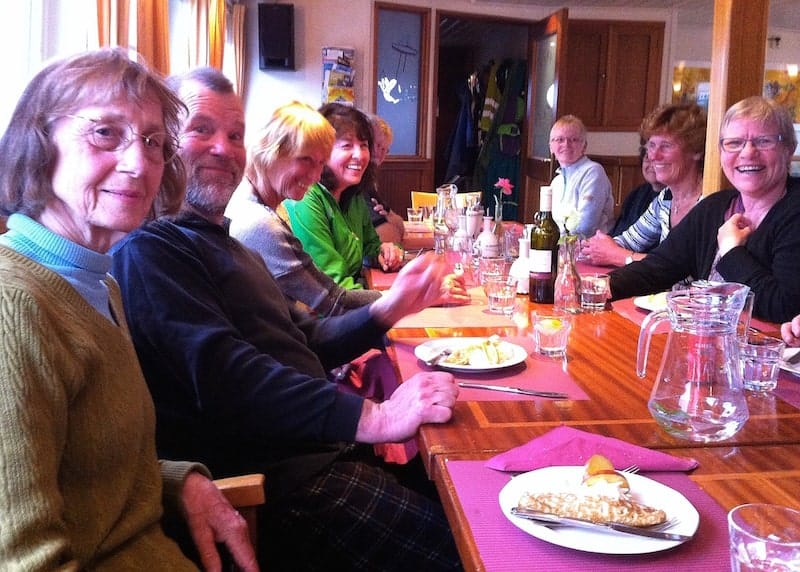
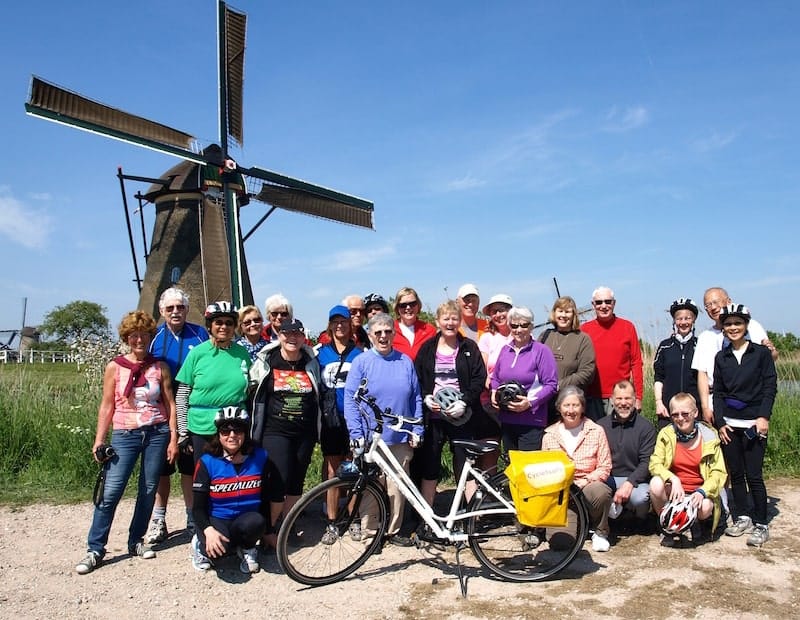

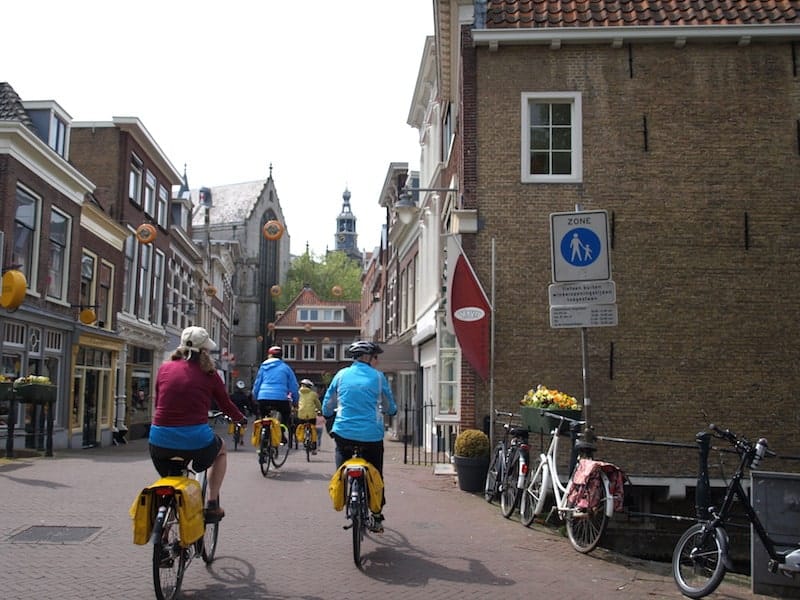
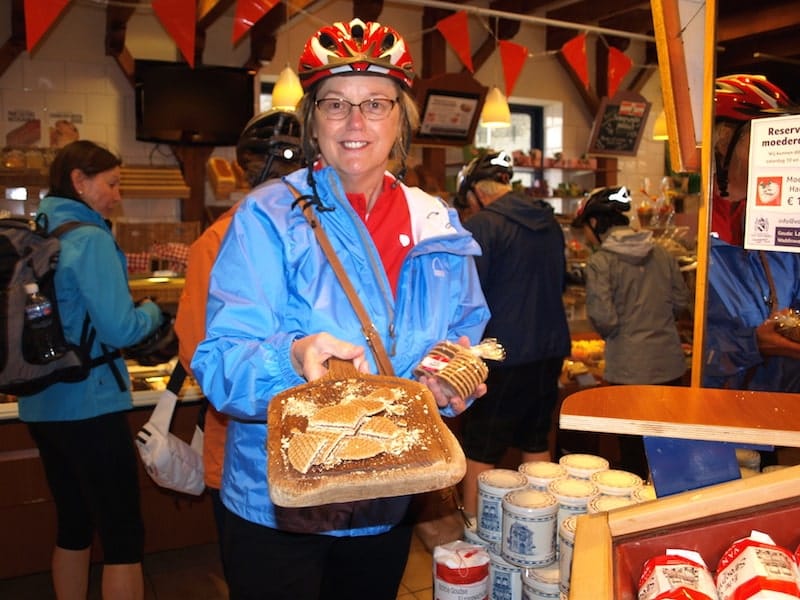
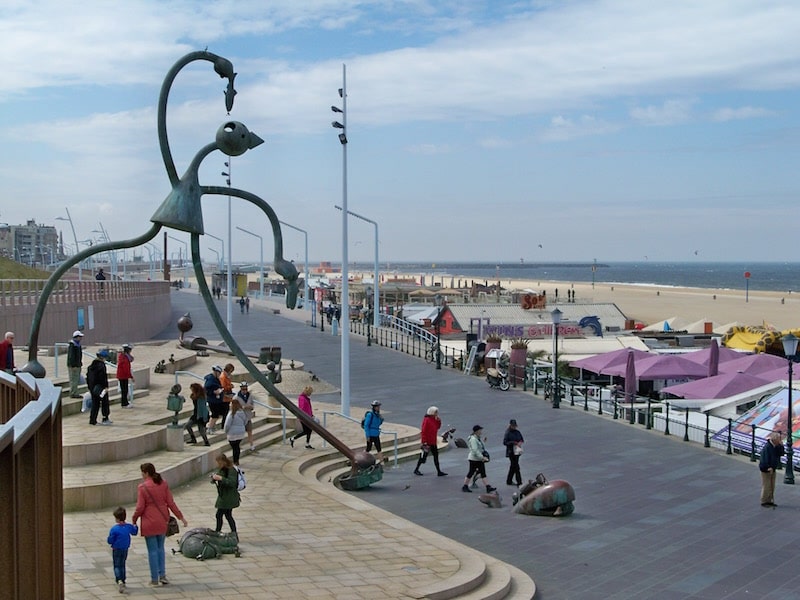
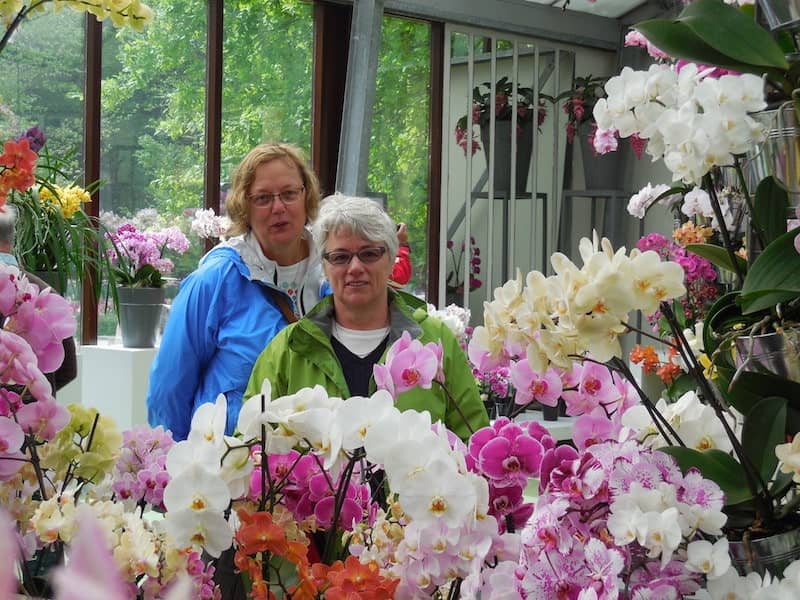
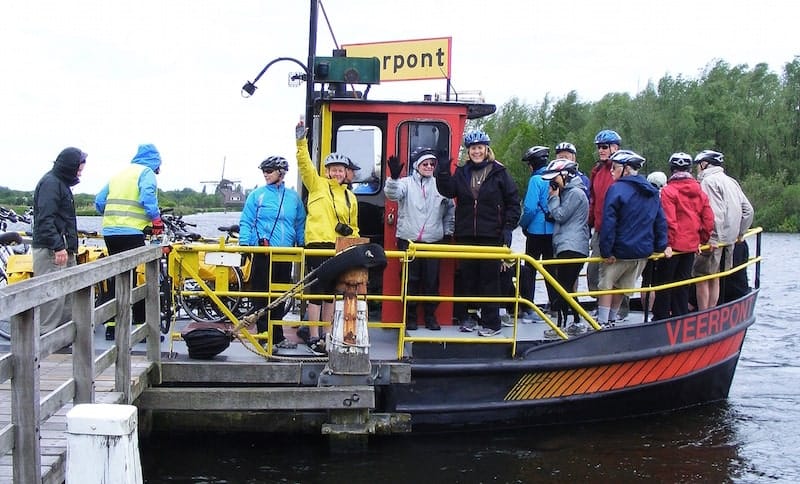
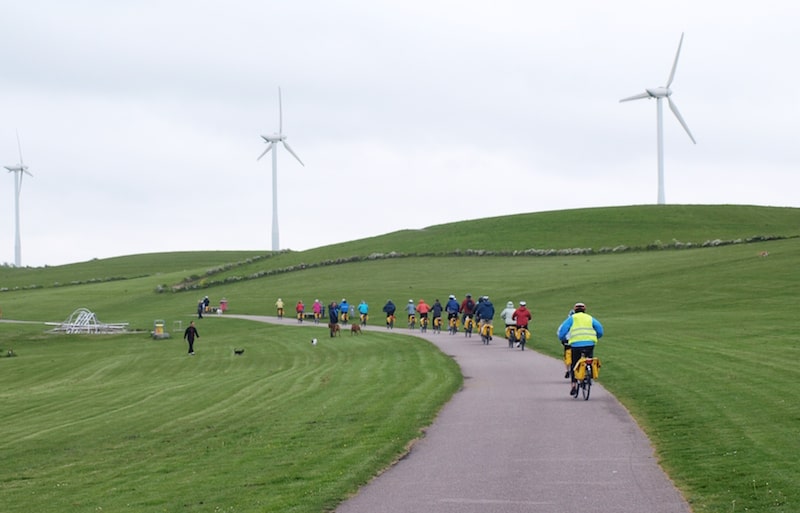
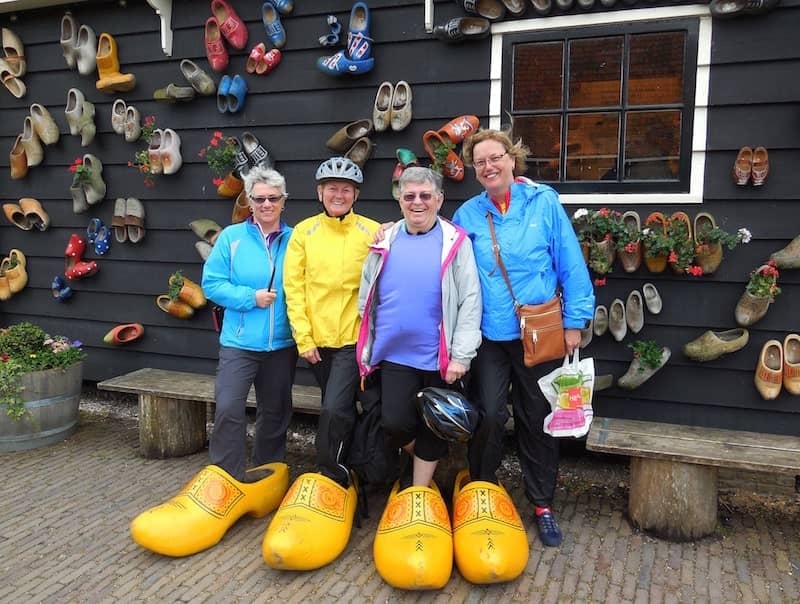
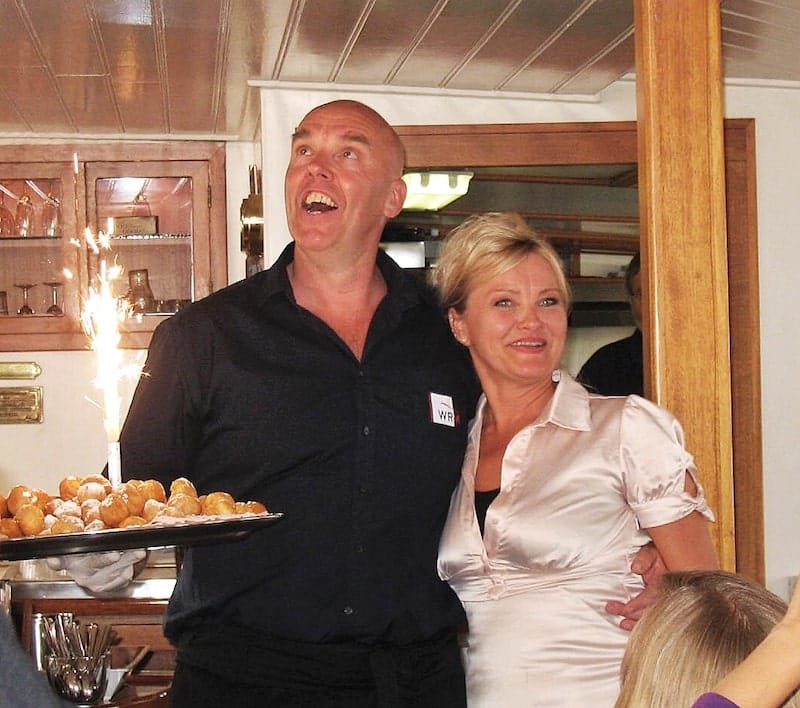
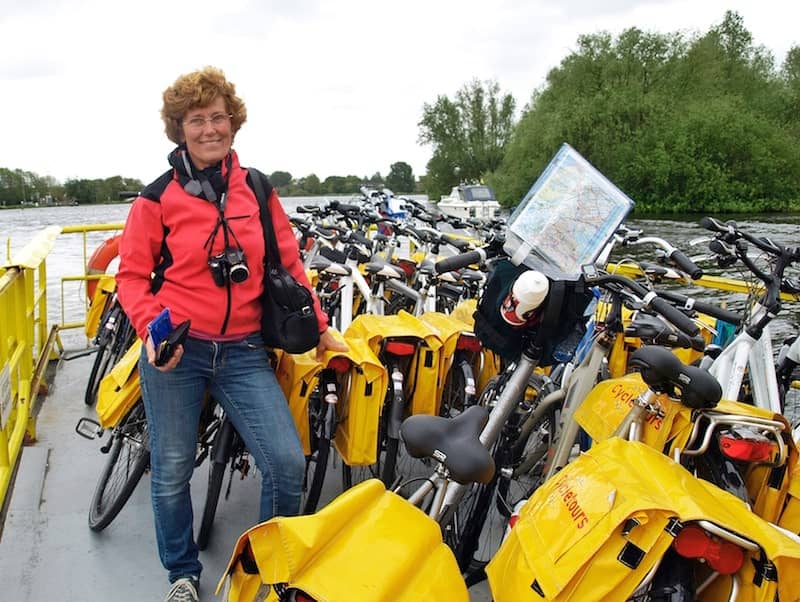




I much enjoyed reading this, Anne. I know most of the places you visited very well, though I’ve yet to get to the Kinderdijk. Thanks for bringing it all back to me. I’ll be back in NL in April and can’t wait to pedal into the tulip fields again. All the best, Richard.
Richard Tulloch recently posted…DANCES WITH WARRIORS
This sounds like a greatest hits tour of The Netherlands! Would love to cycle there.
I was reading the report again today, while it’s grey and rainy in Holland.
But…. the daffodils are already blooming, even one carnation shows it’s beautiful colours!! I cannot wait to start guiding.
I wish you a happy New Year and many new biking adventures.
All the best,
Annie
Thank you, Annie. I can’t believe you’re seeing tulips in bloom this early. Let me know when you plan a visit to Canada’s east coast. Happy New Year and I wish you many pleasurable guiding experiences in 2016. Are you still with the Liza Marleen?
Anne Betts recently posted…Blue cruise on a Turkish gulet
Wow this would definitely be a great activity for people who love to keep fit while travelling! I would enjoy doing this, but I’m not sure if my calves would cope!
Thank you for such a detailed guide! I’m so desperate to see the tulips one year. I especially like how you broke this up by days. Will be coming back to this when I finally get to go.
I have not been to Netherlands yet, but this is a great blog with so much information on what to do. Apart from the spectacular tulips and other flowers, there seems to be so much to do using cycle tours to keep fit. Bookmarking your blog for future reference.:-)
This looks like it would be a great way to see the Netherlands. Love the photo with the large clogs
I was too afraid to cycle in Amsterdam but I think a tour like this would have helepd a lot. I’ll try it next time!
This sounds like such a great way to experience Holland, especially during the tulip season. I also love that they get your height prior so your bike is just right 👏🏽
So beautiful
Need a general idea of costs to #days. This determines if I can consider your tour.
Thank you,
Frances
Hi Frances. Here’s a description of the itinerary, number of days, and cost (from the company’s website): https://cycletours.com/cycling-holidays/countries/the-netherlands/tulip-tour/ I notice there are quite a few other companies offering similar tours. Good luck with your research.
Hi Anne, Great report! I’m here now doing the southern tour and enjoying dry and sunny weather! There’s nothing on the website about tipping at the end. Is this a expected practice here in the Netherlands? The service is outstanding!
Trying to figure out the cost of your trips. Where do I find tha information?
This might help: https://cycletours.com/cycling-holidays/countries/the-netherlands/